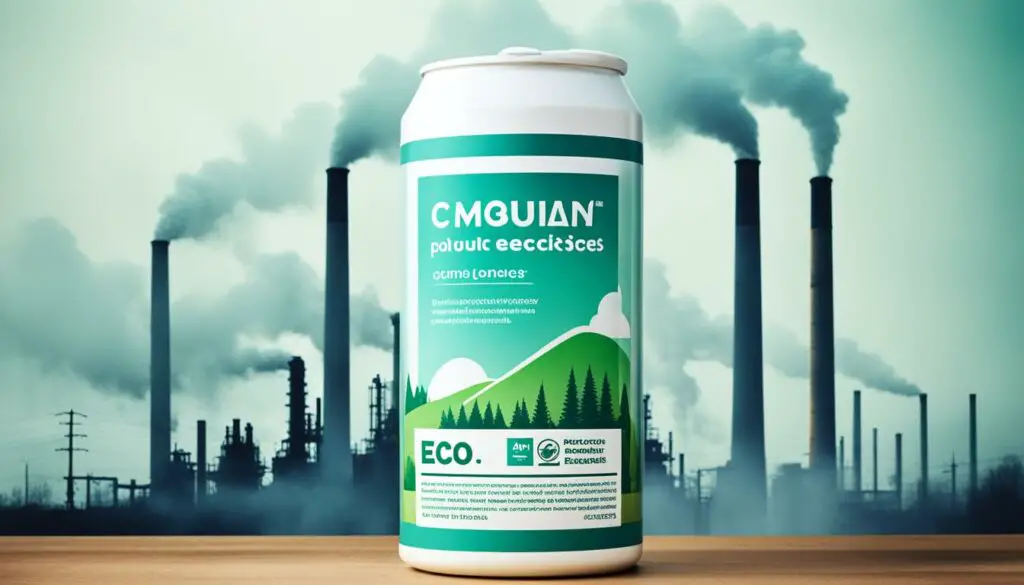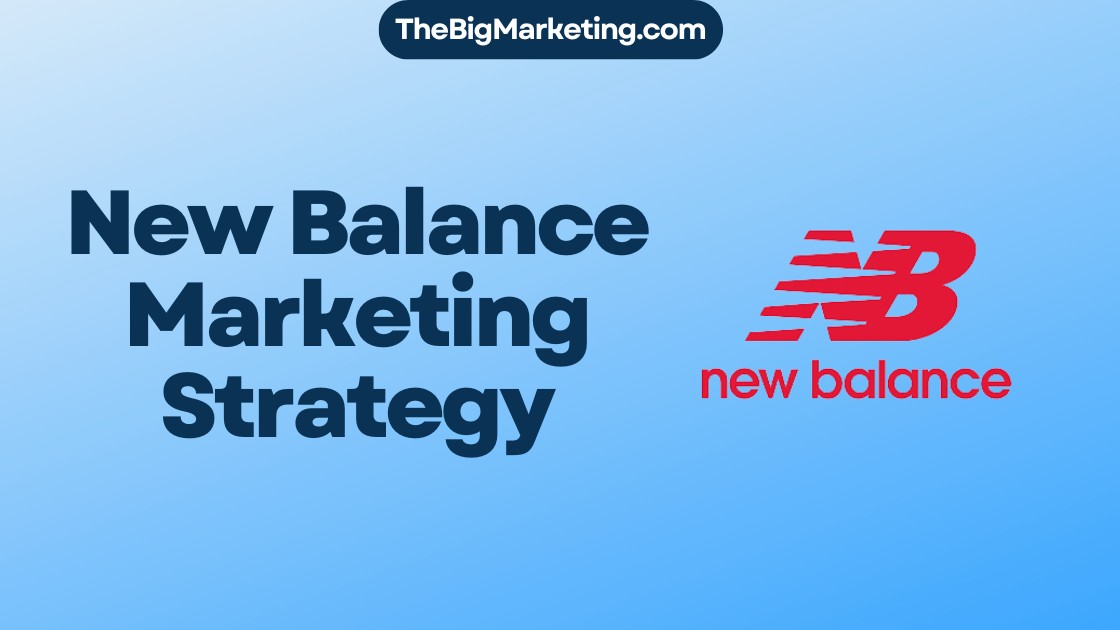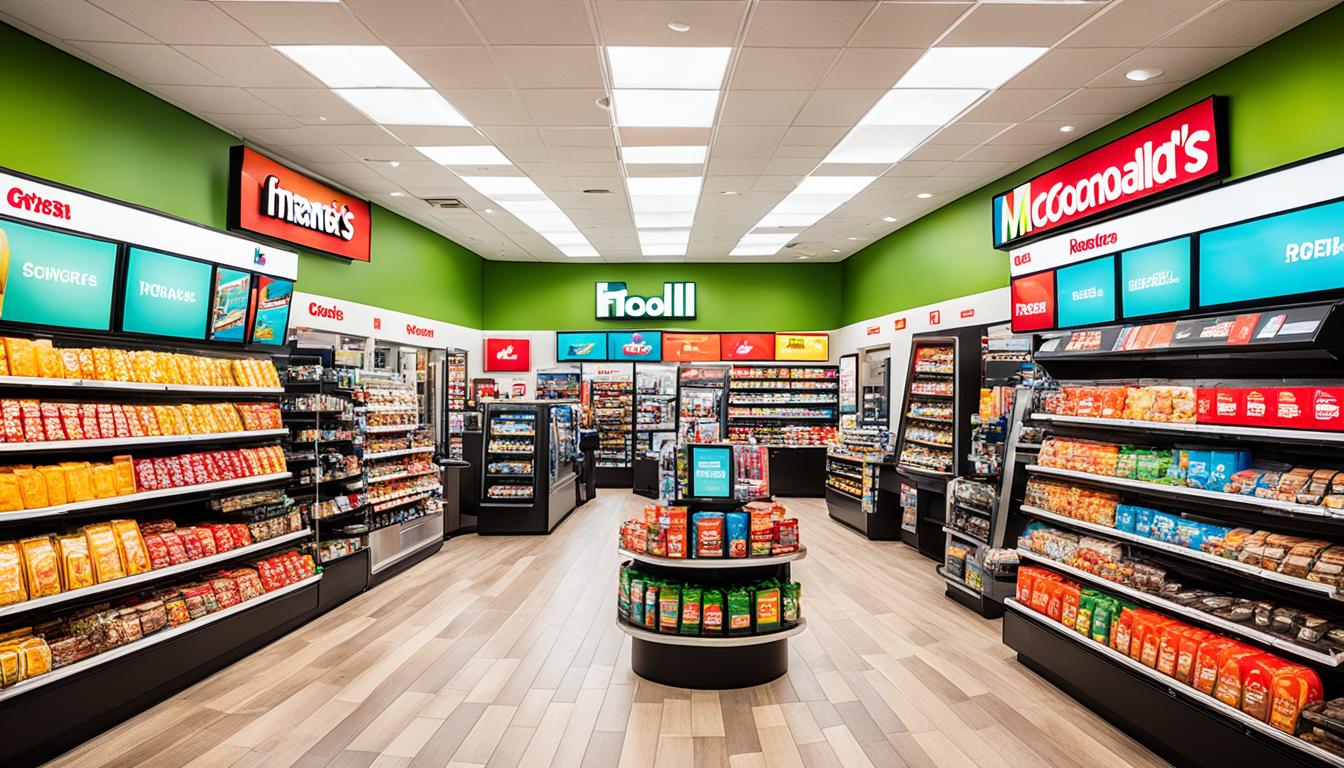When it comes to promoting sustainability and ethical practices, brands often find themselves at a crossroads. On one hand, there is green marketing – a transparent approach that emphasizes genuine sustainability and corporate social responsibility. On the other hand, there is greenwashing – a deceptive practice that misleads consumers with false eco-friendly claims.
So, what exactly is the difference between green marketing and greenwashing? And why is it crucial to understand these concepts in today’s world of eco-conscious consumerism?
In this comprehensive guide, we will explore the nuances of green marketing and greenwashing, their impact on the environment and consumer trust, and how you can identify and avoid falling victim to deceptive practices. We will delve into the origins of greenwashing and showcase notable examples that highlight the importance of genuine sustainability.
Join us as we navigate through the world of sustainable marketing, ethical branding, and the intricacies of environmental messaging. Let’s explore the realm of green consumerism and corporate social responsibility while deciphering the true meaning behind green credentials and the regulations governing green claims.
Whether you are a consumer looking to make more informed choices or a brand aiming to genuinely prioritize sustainability, this guide will equip you with the knowledge and understanding necessary to navigate the complex landscape of green marketing and greenwashing.
Key Takeaways:
- Green marketing focuses on transparency, sustainability, and corporate social responsibility.
- Greenwashing refers to misleading consumers with false eco-friendly claims.
- Greenwashing can harm the environment and damage a brand’s reputation.
- Consumers can identify greenwashing through certifications, packaging, and verifiable claims.
- Sustainable digital publishing platforms like Paperturn contribute to eco-friendly practices.
Understanding Green Marketing
Green marketing is a strategic approach taken by brands to promote sustainable practices and environmentally friendly products. It involves the promotion of goods and services that are free of toxic materials, made from recycled or sustainable resources, manufactured in a sustainable fashion, and designed to minimize waste. Green marketing is an essential component of corporate social responsibility, showcasing a brand’s commitment to sustainability and its contribution to a greener future.
By engaging in sustainable marketing practices, businesses aim to attract environmentally conscious consumers who prioritize eco-friendly products. Brands that prioritize green marketing recognize the increasing demand for sustainable products and understand the importance of reducing their overall environmental impact. These businesses go beyond merely offering green products; they prioritize sustainable development, invest in renewable energy sources, implement eco-friendly packaging solutions, and actively participate in efforts to preserve the environment.
One notable example of a brand that embraces green marketing is Patagonia. Patagonia, an outdoor clothing company, is committed to reducing its environmental footprint by using sustainable materials and implementing fair labor practices. The brand’s commitment to sustainability is evident in its “Worn Wear” program, which encourages customers to repair their clothing rather than replacing it. Patagonia’s focus on sustainable marketing has not only attracted environmentally conscious customers but has also positioned the brand as a leader in the sustainable fashion industry.
The Benefits of Green Marketing
Engaging in green marketing offers several advantages to businesses. First and foremost, it allows brands to tap into the growing market of environmentally conscious consumers. As sustainability becomes a more significant concern for individuals, there is a demand for products and services that align with their values. By marketing themselves as eco-friendly, brands can stand out in the market and attract environmentally conscious customers who are willing to pay a premium for sustainable options.
Furthermore, green marketing enhances a brand’s corporate social responsibility (CSR) image. By promoting environmentally friendly practices, brands can demonstrate that they care about the environment and are actively taking steps to reduce their environmental impact. This can contribute to a positive brand reputation and foster customer loyalty.
Additionally, green marketing can lead to cost savings for businesses. Implementing sustainable practices, such as energy-efficient manufacturing processes or reducing packaging waste, can result in reduced operational costs. By minimizing waste and optimizing resource use, businesses can operate more efficiently and reduce their overall expenses.
Overall, green marketing is a win-win for both brands and consumers. It allows businesses to differentiate themselves in the market, attract environmentally conscious consumers, and drive profitability while contributing to a greener and more sustainable future.
| Key Benefits of Green Marketing |
|---|
| Attract environmentally conscious consumers |
| Enhance corporate social responsibility image |
| Drive brand loyalty and customer trust |
| Generate cost savings through sustainable practices |
| Position the brand as a leader in sustainability |
Unveiling Greenwashing
Greenwashing is a deceptive practice that involves exaggerating or misrepresenting a brand’s environmental commitment. This misleading advertising strategy can take various forms, including deceptive claims, irrelevant or unverifiable certifications, and misleading packaging. By creating a false perception of eco-friendliness, greenwashing not only damages a brand’s reputation but also undermines consumer trust in genuinely sustainable practices.
The risks associated with greenwashing are significant. When consumers are misled by deceptive claims, their confidence in companies that genuinely prioritize sustainability is eroded. This can result in increased skepticism among consumers, leading to a decline in green consumerism. Moreover, greenwashing can have negative environmental consequences as it diverts attention away from genuine environmental issues and fails to address significant challenges.
To shed light on the deceptive tactics used in greenwashing, let’s explore some examples:
1. False Claims: A company may make misleading statements about their products or services, such as claiming they are “100% eco-friendly” when only a small portion of their practices or materials meet sustainable criteria.
2. Irrelevant Certifications: Some brands boast certifications that are unrelated or unverifiable, tricking consumers into thinking their products are more sustainable than they actually are.
3. Misleading Packaging: Packaging may be designed to give the impression of eco-friendliness, even if the product inside does not align with sustainable principles. This can include using earthy colors or images of natural landscapes.
It’s crucial for consumers to remain vigilant and informed to avoid falling victim to greenwashing. By understanding the risks and recognizing the tactics used, individuals can make more informed decisions and support brands that truly prioritize sustainability.
| Common Tactics | Examples |
|---|---|
| Deceptive Claims | Claiming a product is “100% natural” without providing evidence |
| Irrelevant Certifications | Using a certification that is unrelated to environmental sustainability |
| Misleading Packaging | Using earthy colors or nature imagery to imply eco-friendliness |
The Origins of Greenwashing
The term “greenwashing” was coined by Jay Westerveld, an American environmentalist and researcher, in 1986. Westerveld used the term to describe a beach resort in Samoa that claimed to be environmentally friendly by providing reusable towels while simultaneously expanding into the local land.
Since then, greenwashing has evolved to encompass a broad range of practices where companies prioritize advertising sustainability over implementing genuine eco-friendly practices. It has become a prevalent issue in modern marketing, as businesses attempt to capitalize on the growing demand for environmentally responsible products and services.
This deceptive tactic not only misleads consumers but also undermines the efforts of truly eco-conscious brands. Greenwashing can lead to consumer skepticism, damage a company’s reputation, and contribute to increased environmental harm.
Negative Impacts of Greenwashing
Greenwashing, the deceptive practice of misleading consumers with false environmental claims, has significant negative impacts across various aspects. From consumer skepticism to environmental harm, wasted consumer spending, and reputation damage, greenwashing undermines trust and sustainability efforts.
Consumer Skepticism
One of the primary consequences of greenwashing is the rise of consumer skepticism. When individuals are misled by false eco-friendly claims, their trust in genuinely sustainable products and brands diminishes. This skepticism hampers their motivation to make environmentally conscious choices, hindering progress towards a greener future.
Environmental Harm
Greenwashing diverts attention from genuine environmental issues that require urgent action. By focusing on misleading claims and deceptive advertising practices, greenwashing shifts the narrative away from addressing critical environmental challenges. As a result, real sustainability efforts and initiatives are overshadowed, hindering progress in minimizing environmental harm.
Wasted Consumer Spending
Consumers who pay a premium for products or services with purported green credentials may feel deceived when they discover the claims are false. This revelation not only leads to wasted consumer spending but also instills a sense of betrayal. Consequently, individuals may become hesitant to invest in genuinely sustainable products, leading to a potential setback in the adoption of eco-friendly practices.
Reputation Damage
Greenwashing can significantly damage a company’s reputation. Once exposed, businesses that engage in deceptive environmental claims face severe backlash, leading to diminished consumer trust and loyalty. Reputational damage is often more detrimental than the short-term gains of greenwashing, impacting the long-term sustainability and success of the brand.
| Impacts of Greenwashing | Examples |
|---|---|
| Consumer skepticism | Innocent’s insincere TV adverts |
| Environmental harm | Keurig’s misleading recycling claims |
| Wasted consumer spending | Ikea’s accreditation of illegal logging |
| Reputation damage | Windex’s misleading plastic packaging claims |
| H&M’s misleading sustainable fashion claims | |
| Hefty’s false representation of the product |
Notable Greenwashing Examples
Greenwashing is a deceptive practice that misleads consumers into believing that a brand or product is environmentally friendly, when in reality, it is not. Several notable examples of greenwashing include:
Innocent’s Insincere TV Adverts
Innocent, a well-known beverage brand, has been criticized for its insincere TV adverts that portray the company as environmentally conscious. Despite creating a wholesome image, Innocent has been accused of using non-sustainable packaging and failing to prioritize genuine sustainability efforts.
Keurig’s Misleading Recycling Claims
Keurig, a popular coffee maker brand, has come under fire for misleading recycling claims. The company promoted the recyclability of its single-use coffee pods, but in reality, the pods were not easily recyclable and often ended up in landfills. This practice demonstrates a clear case of greenwashing to enhance the brand’s image without implementing sustainable practices.
Ikea’s Accreditation of Illegal Logging
Ikea, a well-known furniture retailer, faced backlash when it was revealed that the company’s certification by the Forest Stewardship Council (FSC) did not prevent the use of wood from illegal logging practices. Ikea’s greenwashing attempts to present itself as an environmentally responsible company were undermined by its association with illegal deforestation.
Windex’s Misleading Plastic Packaging Claims
Windex, a leading glass cleaner brand, has been accused of greenwashing due to its misleading claims about plastic packaging. The brand advertised its products as being packaged with “50% less plastic”, but the claim failed to address the overall environmental impact of the product, including the use of harmful chemicals and the carbon footprint associated with production and transportation.
H&M’s Misleading Sustainable Fashion Claims
H&M, a global fashion retailer, has faced criticism for misleading claims surrounding its sustainable fashion initiatives. Despite promoting itself as a sustainable and eco-friendly brand, H&M has been accused of greenwashing due to its fast fashion business model, which relies on overconsumption and contributes significantly to textile waste and pollution.
Hefty’s False Representation of the Product
Hefty, a widely recognized brand for disposable products, has been accused of greenwashing through false representation. The brand claimed to produce biodegradable plastic bags, implying that they would break down quickly in natural environments. However, the bags required specific conditions to decompose, rendering the claim deceptive and misleading to consumers.
Ryanair’s False Low-Emissions Claims
Ryanair, a prominent budget airline, has faced criticism for its false low-emissions claims. The company advertised itself as having one of the lowest carbon footprints in the industry, but these claims failed to consider the significant environmental impact of its extensive flight schedules, which contribute to greenhouse gas emissions and climate change.
Quorn’s Unverifiable Carbon-Footprint Claims
Quorn, a popular meat substitute brand, has been questioned for its unverifiable carbon-footprint claims. While Quorn marketed its products as having a lower carbon footprint compared to traditional meat, it failed to provide transparent and comprehensive data to support these claims. This lack of verifiability raises concerns about the credibility of the brand’s sustainability claims.
Shell’s Gaslighting of the Public
Shell, an oil and gas company, has faced significant backlash for its greenwashing practices. Despite being one of the largest producers of fossil fuels, Shell has attempted to portray itself as an environmentally conscious company. However, the company’s continued reliance on non-renewable energy sources and its insufficient investment in renewable energy technologies have been seen as attempts to gaslight the public regarding its true environmental impact.
Unilever’s Unclear Environmental Claims
Unilever, a multinational consumer goods company, has been criticized for its unclear and misleading environmental claims. Although the company has made commitments to sustainable practices, its marketing campaigns and branding often lack specific details and verifiable evidence. This lack of transparency raises concerns about the authenticity of Unilever’s sustainability efforts.
KLM’s Misleading Carbon-Neutral Claims
KLM, a major airline company, has faced scrutiny for its misleading carbon-neutral claims. The airline promoted its carbon-offsetting initiatives to present itself as environmentally responsible. However, critics argue that these efforts do not address the significant environmental impact of air travel and can create a false perception of sustainability without genuine reductions in emissions.
| Brand | Greenwashing Practice |
|---|---|
| Innocent | Insincere TV adverts |
| Keurig | Misleading recycling claims |
| Ikea | Accreditation of illegal logging |
| Windex | Misleading plastic packaging claims |
| H&M | Misleading sustainable fashion claims |
| Hefty | False representation of the product |
| Ryanair | False low-emissions claims |
| Quorn | Unverifiable carbon-footprint claims |
| Shell | Gaslighting of the public |
| Unilever | Unclear environmental claims |
| KLM | Misleading carbon-neutral claims |
Identifying and Avoiding Greenwashing
Consumers can learn to identify and avoid greenwashing by being cautious of generic claims such as “100% natural” or “environmentally friendly” without supporting evidence. Irrelevant claims like “CFC-free” should also raise skepticism since CFCs were banned years ago. Look for certification marks from recognized independent third parties that specialize in verifying environmental claims. Consider the packaging in addition to the product itself, as eco-friendly products should have sustainable packaging. Visual cues, such as earth-friendly colors, can be misleading, so it’s important to look beyond surface-level visuals. Lastly, question percentage claims that lack context, such as “50% more recycled content.”

How to Identify Greenwashing
When it comes to identifying greenwashing, it’s essential to look out for certain red flags:
- Generic Claims: Be cautious of vague statements like “environmentally friendly” or “all-natural” without any specific evidence to support them. Genuine eco-friendly products will provide clear and verifiable information about their environmental impact.
- Irrelevant Claims: Pay attention to claims that seem outdated or irrelevant. For example, if a product is labeled as “CFC-free,” but CFCs have been banned for years, it indicates that the brand may be attempting to mislead consumers.
- Certification Marks: Look for certification marks from recognized independent organizations that specialize in verifying environmental claims. These marks indicate that the product or brand has undergone rigorous evaluation to ensure its environmental sustainability.
- Packaging: Consider the packaging of the product in addition to its environmental claims. Truly eco-friendly products should have packaging that is either recyclable, made from sustainable materials, or minimized to reduce waste.
- Visual Cues: Don’t be misled by surface-level visuals alone, such as earth-friendly colors or images of nature. Look deeper into the brand’s practices and transparency to determine if their environmental claims are genuine.
- Percentage Claims: Be skeptical of percentage claims that lack context. For instance, a product boasting “50% more recycled content” may sound impressive, but without further information, it’s challenging to understand the overall environmental impact of the product.
Embracing Sustainable Digital Publishing
Transitioning to digital publishing is a key step in promoting sustainability and reducing paper waste. With platforms like Paperturn, businesses and individuals can take advantage of eco-friendly digital publishing solutions. Paperturn offers a user-friendly interface that allows users to create interactive and engaging flipbooks without the need for physical printing.
By simply uploading a PDF file, users can transform their content into captivating digital flipbooks that can be easily shared and accessed online. This eliminates the need for paper-based publications, minimizing the environmental impact associated with printing and distribution.
Going paperless through digital publishing not only contributes to a more sustainable future but also offers numerous practical benefits. It saves valuable resources, such as paper and ink, and reduces overhead costs associated with printing, storage, and transportation.
Furthermore, digital flipbooks offer a range of interactive features that enhance the reader experience, such as embedded videos, clickable links, and interactive elements. This interactivity captures and sustains reader engagement, making digital publishing an effective and modern solution for content delivery.
Digital Publishing Advantages:
- Reduces paper waste and supports sustainability efforts.
- Saves resources and reduces overhead costs.
- Enables interactive features, enhancing reader engagement.
- Facilitates easy sharing and accessibility of content.
- Eliminates the need for physical printing and distribution.
Embracing sustainable digital publishing with platforms like Paperturn enables businesses and individuals to align their content distribution strategies with eco-friendly practices. By going paperless, they contribute to a more sustainable future while enjoying the practical benefits of digital publishing.
| Benefits of Sustainable Digital Publishing | Traditional Print Publishing |
|---|---|
| Reduces paper waste | Requires extensive paper usage |
| Saves resources and overhead costs | Involves expenses for printing, storage, and distribution |
| Enables interactive features | Static content without interactive elements |
| Facilitates easy sharing and accessibility | Requires physical distribution and transportation |
| Eliminates the need for physical printing | Relies on extensive print production |
Conclusion
Green marketing and greenwashing are two fundamentally different approaches to sustainability. Green marketing involves brands adopting transparent and honest practices that prioritize sustainable development and corporate social responsibility. It is about promoting and offering products or services that are genuinely eco-friendly, made from sustainable resources, and manufactured in a responsible manner. By embracing green marketing, brands can attract and engage environmentally conscious consumers while contributing to a greener future.
On the other hand, greenwashing is a deceptive practice where brands falsely claim to be eco-friendly without actually implementing sustainable practices. It involves misleading consumers through false marketing claims, certifications that have no real meaning, and irrelevant packaging. Greenwashing not only undermines consumer trust but also hinders genuine sustainability efforts and contributes to environmental harm. It is crucial for consumers to be aware of greenwashing tactics and make informed choices to support brands that demonstrate genuine commitment to sustainability.
By understanding the difference between green marketing and greenwashing, consumers can play an active role in promoting genuine sustainability. They can scrutinize marketing claims, look for credible certifications, and evaluate a brand’s overall commitment to sustainable practices. Genuine sustainability goes beyond superficial green messaging and requires brands to make meaningful changes in their operations and supply chains. By supporting brands that prioritize sustainability, consumers can drive positive change in the marketplace and contribute to a more sustainable future for all.
FAQ
What is green marketing?
Green marketing involves promoting products or services that are free of toxic materials, made from recycled or sustainable resources, manufactured in a sustainable fashion, and designed to minimize waste. It is an approach taken by brands that prioritize sustainability and follow specific environmental standards. Green marketing often involves sustainable development and corporate social responsibility.
What is greenwashing?
Greenwashing refers to the practice of misleading consumers by branding products or services as eco-friendly without actually implementing environmentally friendly practices. It involves deceptive claims, false certifications, and misleading packaging. Greenwashing undermines consumer trust in genuinely sustainable practices and can have negative impacts on a brand’s reputation and the environment.
Who coined the term "greenwashing"?
The term “greenwashing” was coined by Jay Westerveld, an American environmentalist and researcher, in 1986. He used the term to describe a beach resort in Samoa that claimed to be environmentally friendly by providing reusable towels while simultaneously expanding into the local land. Since then, greenwashing has come to encompass a broad range of practices where companies prioritize advertising sustainability over implementing genuine eco-friendly practices.
What are the negative impacts of greenwashing?
Greenwashing can lead to consumer skepticism, causing individuals to lose trust in eco-friendly products and reducing their motivation to make sustainable choices. It also diverts attention from genuine environmental issues and can contribute to increased environmental harm. Additionally, consumers who pay a premium for supposed green products may feel deceived and lose confidence in the brand. Greenwashing can quickly damage a company’s reputation, which is often more detrimental than genuinely adopting sustainable practices.
Can you provide examples of greenwashing?
Some notable examples of greenwashing include Innocent’s insincere TV adverts, Keurig’s misleading recycling claims, Ikea’s accreditation of illegal logging, Windex’s misleading plastic packaging claims, H&M’s misleading sustainable fashion claims, Hefty’s false representation of the product, Ryanair’s false low-emissions claims, Quorn’s unverifiable carbon-footprint claims, Shell’s gaslighting of the public, Unilever’s unclear environmental claims, and KLM’s misleading carbon-neutral claims.
How can consumers identify and avoid greenwashing?
Consumers can learn to identify and avoid greenwashing by being cautious of generic claims such as “100% natural” or “environmentally friendly” without supporting evidence. Irrelevant claims like “CFC-free” should also raise skepticism since CFCs were banned years ago. Look for certification marks from recognized independent third parties that specialize in verifying environmental claims. Consider the packaging in addition to the product itself, as eco-friendly products should have sustainable packaging. Visual cues, such as earth-friendly colors, can be misleading, so it’s important to look beyond surface-level visuals. Lastly, question percentage claims that lack context, such as “50% more recycled content.”
How can digital publishing contribute to sustainability?
Platforms like Paperturn offer a user-friendly interface for creating interactive digital flipbooks, eliminating the need for physical printing. Going paperless reduces the environmental impact of printing, saves resources, and lowers overhead costs. By utilizing sustainable digital publishing methods, companies can contribute to sustainability efforts and reduce their ecological footprint.
What is the difference between green marketing and greenwashing?
Green marketing involves transparent and honest practices that prioritize sustainable development and corporate social responsibility. It promotes genuinely eco-friendly products and services. Greenwashing, on the other hand, refers to deceptive practices that mislead consumers into believing a brand is eco-friendly when it is not. It involves false claims, irrelevant certifications, and misleading packaging. Understanding the difference allows consumers to make informed choices and support brands that genuinely prioritize sustainability.







